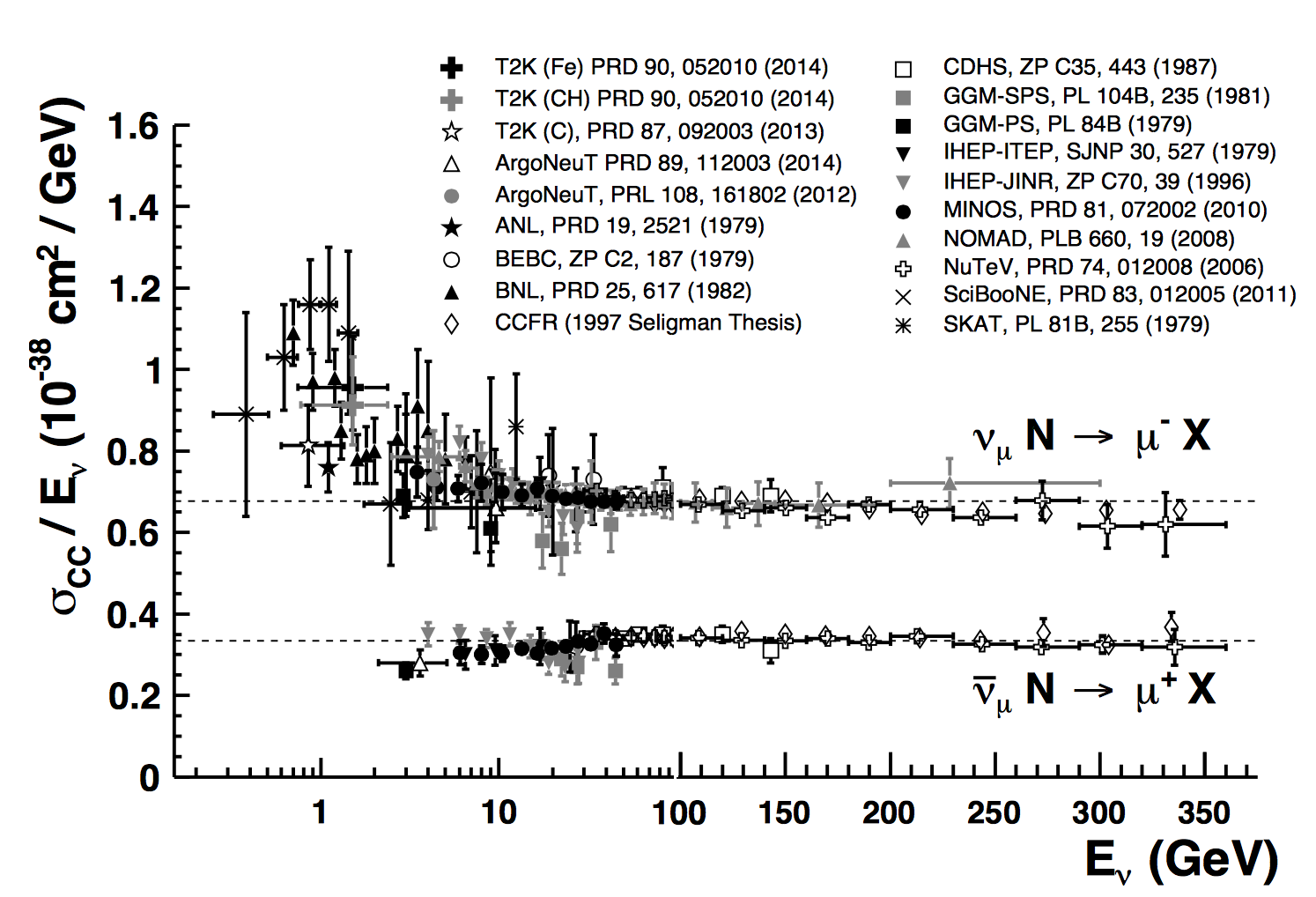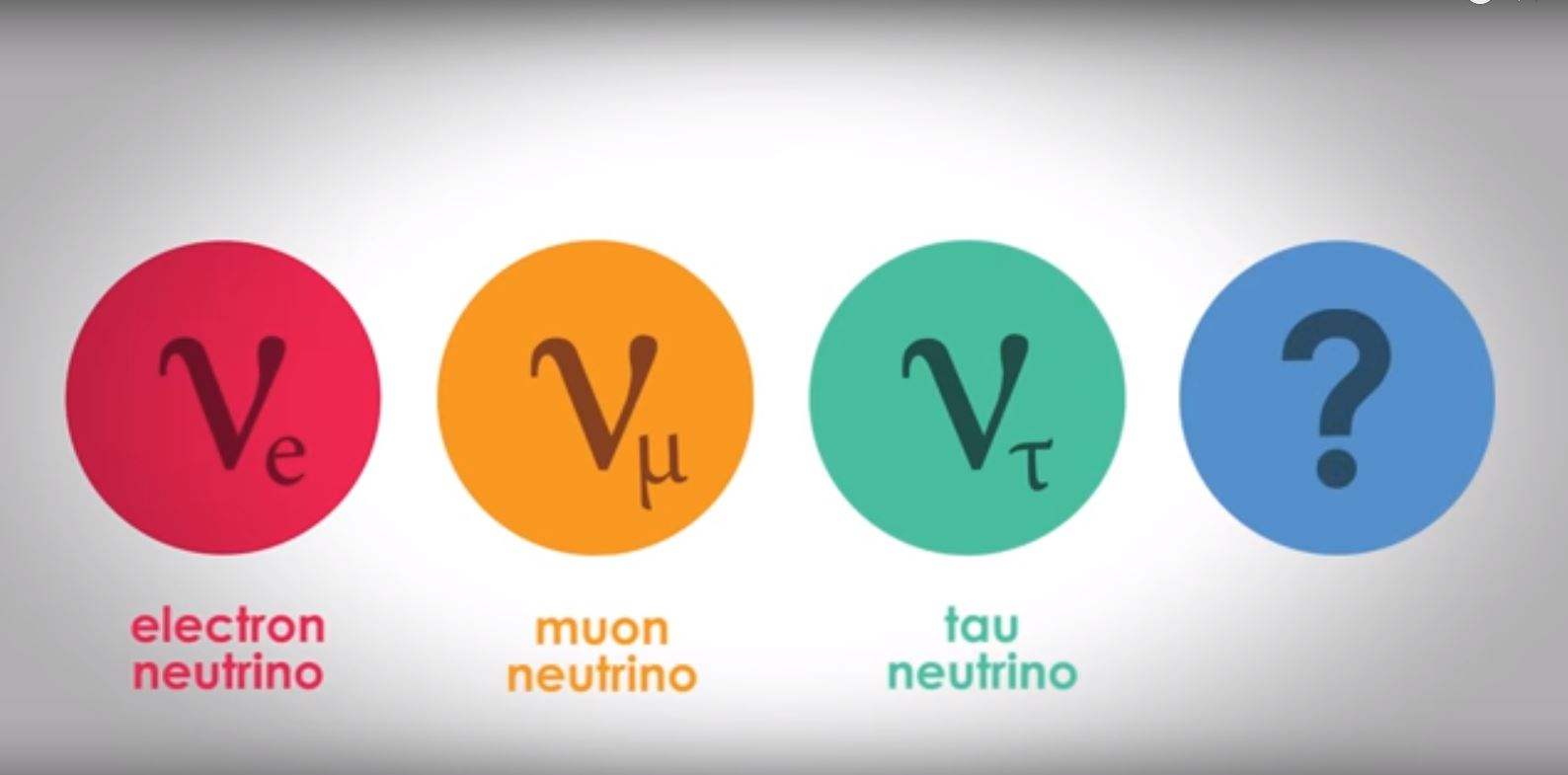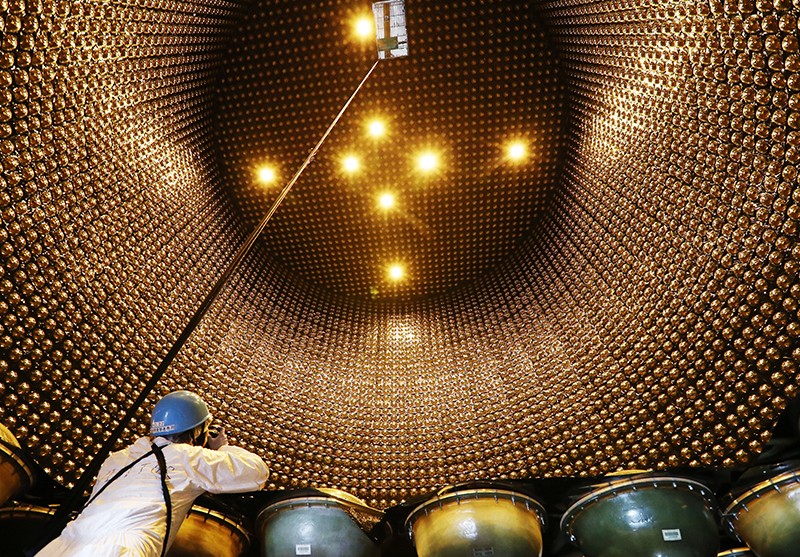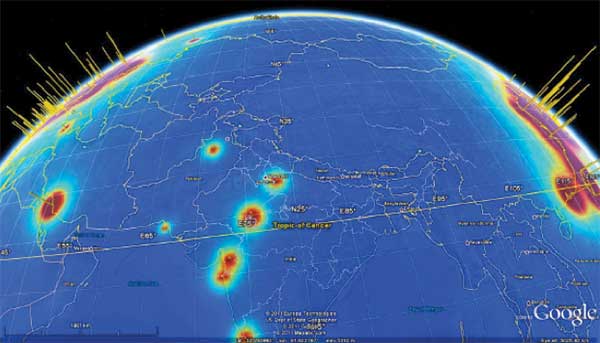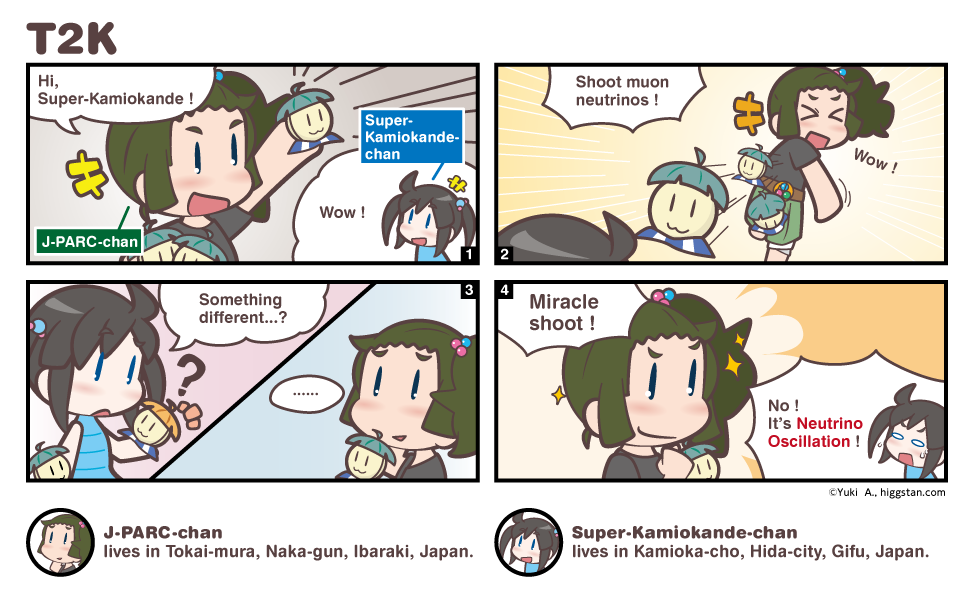How can we see neutrinos?
Neutrino is super-abundant, each second 1012 neutrinos from the Sun passing through your body. That means it is about 1022 neutrinos passing through your body in overall timeline. However only one neutrino will interact with your body on average. That low interaction probability requires the BIG detector with large amount of material to detect them. For example, the Super-Kamiokande detector (Super-K), from which Prof. Kajita receive Nobel prize in 2015, is a large cylinder of 41.4 m-tall and 39.3 m-diameter. This detector contains 50,000 tons of water. Also because the signal is very rare, it needs to reduce the background contamination as much as possible. That is why Super-K is put 1000m underground to shield detector itself from the cosmic ray. It likes you need a headphone to cancel the noise when listening music. Assume neutrinos hit on the target material inside detector, what is next? You cannot see neutrino directly but via the products induced by neutrino-nucleon (or nuclei) interaction. To trace these products you will need eyes, actually a lot of eyes to record as much as possible the information from the traces. It is important to note that not all products are visible to the “eyes” of detector.
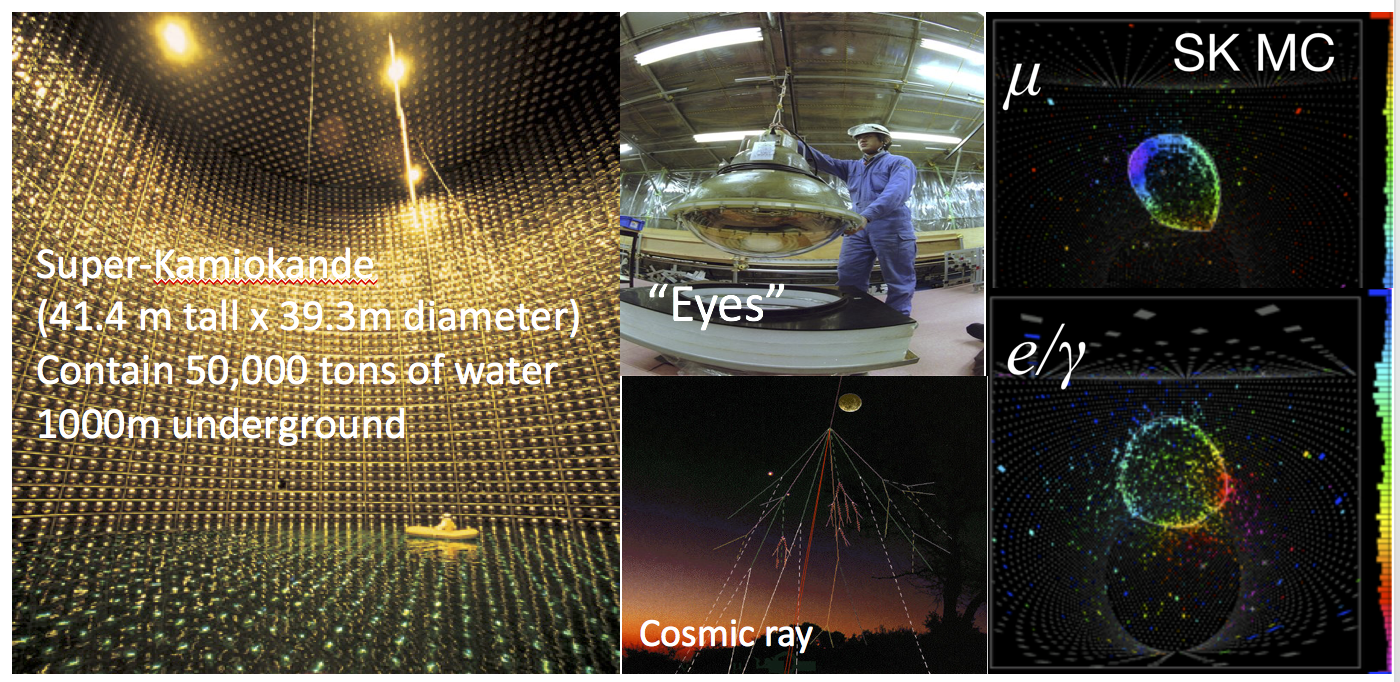
Fig: Super-Kamioka detector, it eyes and the simulated 1ring muon-like and 1 ring electron-like
Information from the trace, basically including the amplitude, position and timing of the hits, is recorded. These information then is used to reconstruct the so-called event along with useful features such as energy, momentum, scattering angle, etc... These events are classified into different categories and depending on the considering physics, some specific sample of events are selected. For example, in Super-K (usage as T2K far detector), 1 ring muon-like events are used for muon neutrino disappearance measurement and 1 ring electron-like events are used for electron neutrino appearance measurement.
Learn more about Neutrinos
-
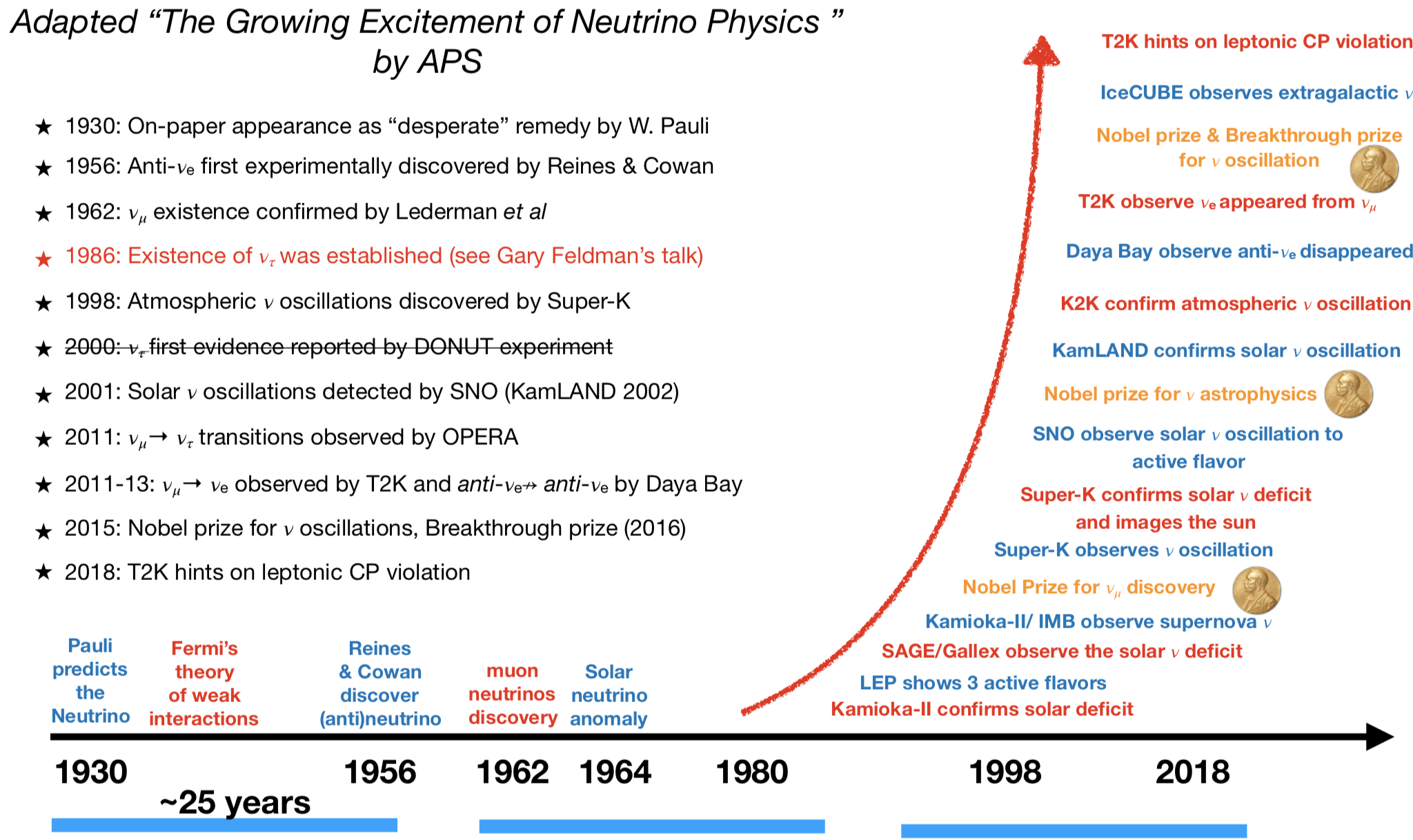
Introduction to neutrino
brief history, what we know/don't know...
-
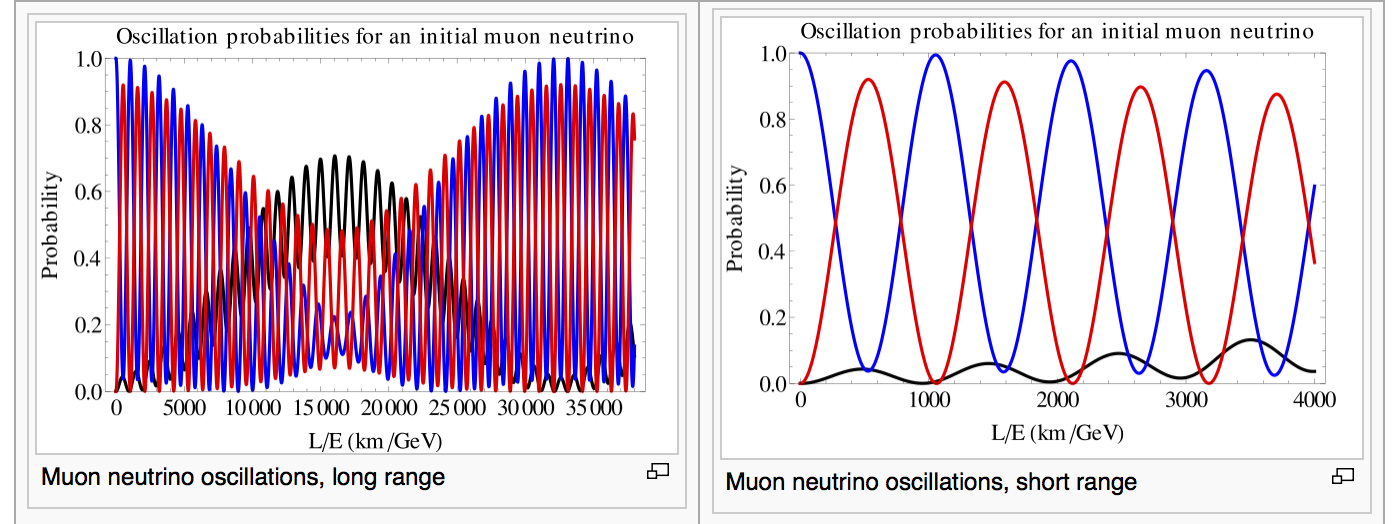
Neutrino Oscillation
A well-understood phenomenon, tell us neutrinos have mass and leptons are mixed...
-
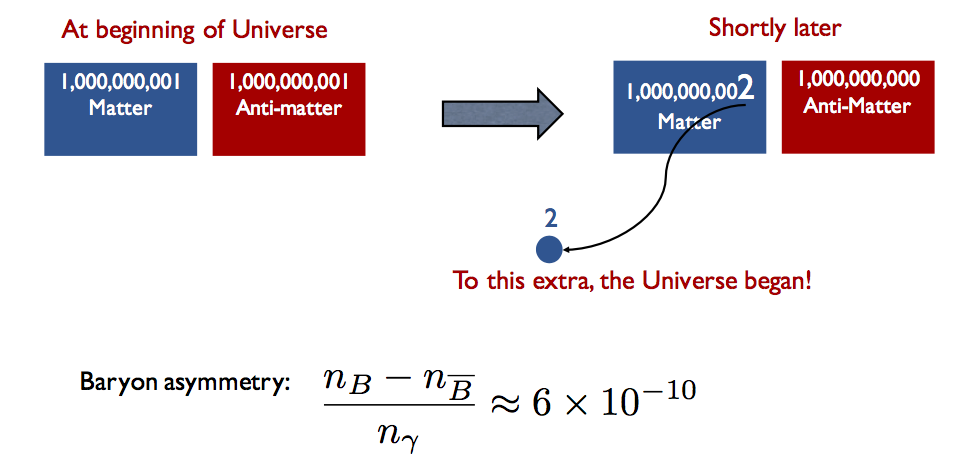
Search for CP violation
Can neutrino be our ultimate mother, a reason for our matter-dominated Universe...



